Blog » How to Guides » Robert Plutchik’s Wheel of Emotions
Wheel of Emotions
The Definitive Guide
This is the Ultimate Guide to The Wheel of Emotions!
If you’re looking to identify your emotions, cater to your emotional needs and increase your emotional intelligence, you have come to just the place!
So if you want to:

- Learn about how your emotions influence you
- Learn about Plutchik’s psychoevolutionary theory and his Emotions Wheel
- Find out how to effectively use your emotions at the workplace and as a coach
- And find your core emotion
Then you’ll love this guide!
Let’s get started!
Don’t have time to read the whole guide right now?
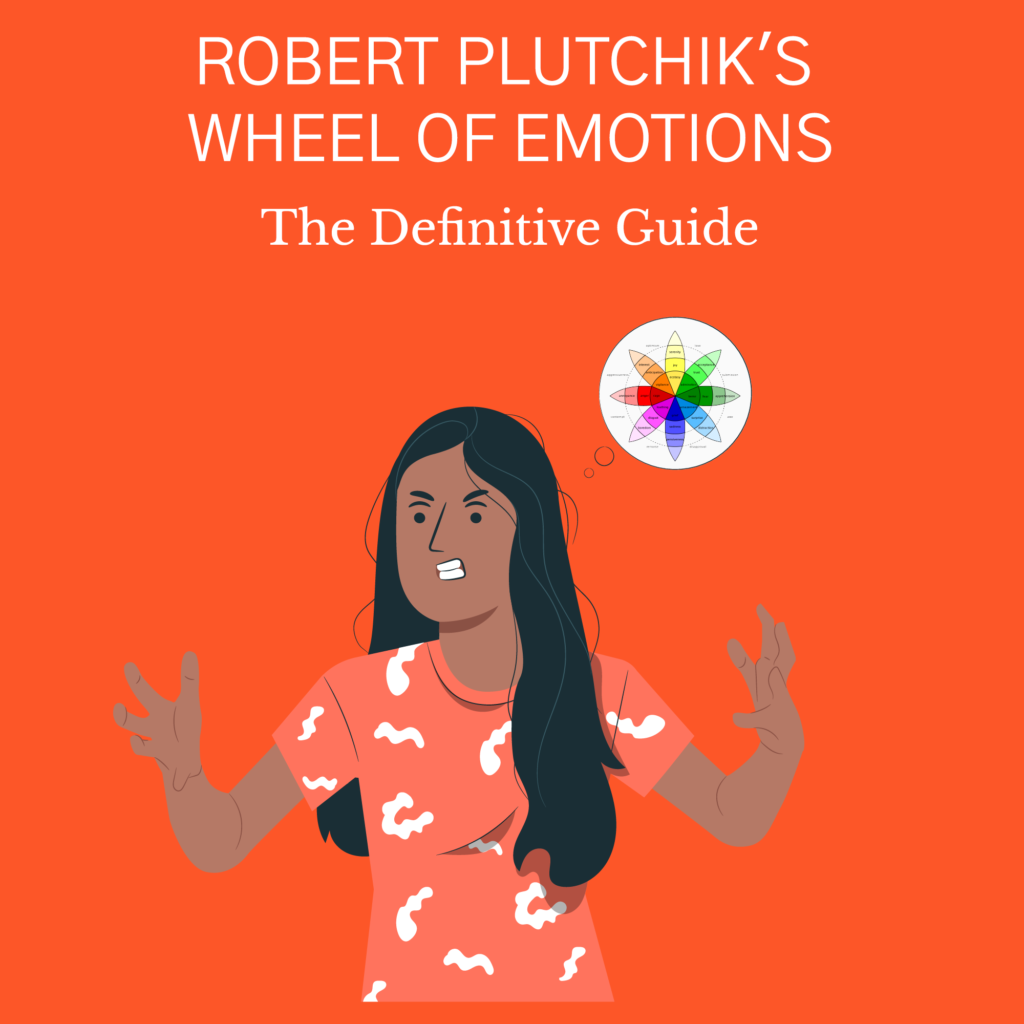
No worries. Let me send you a copy so you can read it when it’s convenient for you. Just let me know where to send it (takes 5 seconds)
Yes! Give me my PDFContents
Chapter 1:
The Fundamentals
You and I are both aware of how confusing and overwhelming emotions can be sometimes.
But what if you could explore and truly understand them with an Emotion Wheel?

Robert Plutchik’s and The Feeling’s Wheel
Plutchik’s Wheel of Emotions provides a logical way to make sense of feelings!
The Feeling’s Wheel was developed by American psychologist Robert Plutchik in 1980 as a visual tool to understand his psycho evolutionary theory. I will go on to explain this in detail in Chapter 3.
The Emotion Wheel offers a visual representation of primary emotions, displaying the varying degrees and complexities of different feelings.
As a tool, it can help you put a name to, and come to terms with your emotions in many different contexts, including simply developing greater self-awareness.
I have explained The Feelings Wheel in detail in Chapter 4.
Before you and I dive deeper into our emotional world, let’s get to know the man behind these transformative theories.
Chapter 2:
History of the Wheel of Emotions
Many psychologists throughout history have come up with their versions of the Feelings Wheel.
But Robert Plutchik’s Wheel of Emotions is the most popular and accurate one.
He has studied the human mind and emotions extensively.
Emotions as you all know are extremely complex and varied, thus, for his time, he was one of the pioneers of this subject.

Who was Robert Plutchik ?
Robert Plutchik was a professor emeritus at the Albert Einstein College of Medicine and adjunct professor at the University of South Florida.
Having received his Ph.D. from Columbia University, he was also a psychologist. He has authored and co-authored more than 260 articles and eight books, and edited seven books.
His research interests included the study of emotions, the study of suicide and violence, and the study of the psychotherapy process.
Emotions are a big part of your life and mine. But how to define them? How do they influence our actions?
Definition of Emotion
According to the Britannica, an emotion is a complex experience of consciousness, bodily sensation, and behavior that reflects the personal significance of a thing, an event, or a state of affairs.
5 Ways in which Emotions Influence our Actions
Emotions influence everyone’s actions.
Whether you are a man or a woman and whether you are aware of it or not.
Here are five ways to make you aware of exactly how emotions influence our actions :
1. Emotion Component
Emotion component simply refers to when you or I purely experience our emotions on a day-to-day basis. It is when we recognize and observe how we feel, and what we are experiencing.
2. Action Tendency Component
Once the emotion is identified, the body moves into action.
The emotions we feel lead us to perform certain specific actions instead of others.
While some actions and reactions are out of our control, like pulling your foot away from something pointy in the ground; There are others that are within our control.
Such as facing your fear of failure, and showing up for an exam or a performance, for instance.
3. Appraisal Component
By rationally analyzing the emotion, you can understand the situations, actions, environments, or individuals that are causing the emotion.
Once you have understood the root of an emotion, you can decide how to respond to it. You can track your well-being by observing how you respond to the emotions you feel.
Finding your core reason or motivation can help you respond to your emotions in a healthy manner. It also enables you to communicate your emotions and your reasons for feeling them to the external world.
4. Motor Component
This entails how you express physically what you are experiencing in the moment. It includes facial expressions, hand gestures and other body movements.
You and I have our own unique ways of self expression. It tells a lot about how we are. It is used to communicate better with the world around us.
5. Physiological Component
This component involves chemical reactions that your body experiences when you feel an emotion strongly.
For instance, you experience a rush of blood flow to your face and hands when you experience the emotion of anger.
Chapter 3:
Plutchik’s Psychoevolutionary Theory of Basic Emotions
The general psychoevolutionary theory of emotion has a number of important characteristics.
First, it provides a broad evolutionary foundation for conceptualizing the domain of emotion as seen in animals and humans.
Second, it provides a structural model which describes the interrelations among emotions.
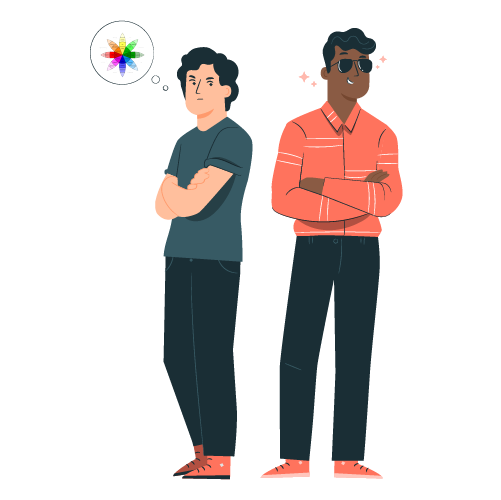
Third, it has demonstrated both theoretical and empirical relations between personality traits, diagnoses, and ego defenses.
Fourth, it has stimulated a good deal of empirical research using these tools and concepts.
Finally, the theory provides useful insights into the relationships among emotions, adaptations, and evolution.
Now let’s get into it!
Postulate 1
“Emotions are communication and survival mechanisms based on evolutionary adaptations.”
This first postulate is based on Charles Darwin’s theories on Ethological Tradition. According to him, emotions have two basic functions for all animals.
The first function is that of survival.
Emotions drastically increase the chances of survival of an individual by having them react appropriately to an emergency situation (for example, by fight, flight, or keeping calm when someone else is being unreasonable)
Secondly, emotions are signs. They act as signals for future intentions and goals by displaying behaviors of various kinds. How you feel for an extended period of time, impacts your behavior and helps you to predict your future actions.
Postulate 2
“Emotions have a genetic basis.”
This theory that emotions have a genetic basis stems directly from Darwin’s evolutionary theory. He very wisely pointed out that emotional expressions appear similarly in all forms and all kinds of human beings.
A blind person, an infant, and an adult all express emotions in a similar manner. They all feel the same when they are experiencing an emotion.
Emotions appear to be similar even in widely separated and different groups of humans. It is something that we all have in common, no matter how different we are.
Postulate 3
“Emotions are hypothetical constructs based on various classes of evidence.”
Can you be certain of what someone else is feeling? Even if he/she is very close to you, it is impossible to be absolutely certain.
The third postulate of the psychoevolutionary theory of emotion states that emotions are hypothetical constructs or inferences based on various classes of evidence.
You are never exactly certain 0f someone else’s emotions because feelings are extremely complex in nature, and because you can experience more than one emotion at the same time.
Even displays of emotions can be hard to fully comprehend, because they come in pairs and reflect complex mental states such as approach and avoidance, attack and flight, sex and agression, or fear and pleasure.
You have to admit – you are often not even certain of your own emotions.
Postulate 4
“Emotions are complex chains of events with stabilizing feedback loops that produce some kind of behavioral homeostasis.”
Emotions can be triggered by various events. If these events are important to you, and affect your well being, you will experience various feelings along with a pattern of physiological changes.
These physiological changes that you go through when you feel an emotion cause strong impulses, like the urge to explore, to attack, or to mate, among others.
You will eventually submit to one of these impulses. Performing the impulsive action will have an effect on the stimulus that triggered this chain of events in the first place.
The stimulus, or the root emotion, then achieves a temporary behavioral homeostatic balance and you feel a bit better.
These postulates can be better understood using the following points:
- The concept of emotion is applicable to all evolutionary levels and applies to all animals, including humans.
- Emotions have an evolutionary history, and have evolved various forms of expression in different species.
- Emotions served an adaptive role in helping organisms deal with key survival issues posed by the environment.
- Despite different forms of expression of emotions in different species, there are certain common elements, or prototype patterns, that can be identified.
- There is a small number of basic, primary, or prototype emotions.
- All other emotions are mixed or derivative states; that is, they occur as combinations, mixtures, or compounds of the primary emotions.
- Each emotion can exist in varying degrees of intensity or levels of arousal.
Now that you know a little more about how your emotions affect you, Plutchik’s history, and his psychoevolutionary theory, let’s delve into Chapter 4 which will cover Plutchik’s Wheel of Emotions at length.
Chapter 4:
Plutchik’s Wheel of Emotions
Robert Plutchik created a wheel of emotions to illustrate different emotions.
Plutchik first proposed his emotional wheel model in 1980 to describe how emotions were related.
He suggested 8 primary bipolar emotions: joy versus sadness; anger versus fear; trust versus disgust; and surprise versus anticipation.
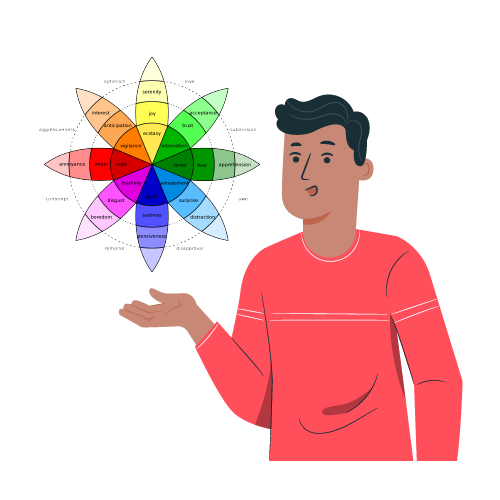
Additionally, his circumplex model makes connections between the idea of an emotion circle and a color wheel.
Like colors, primary emotions can be expressed at different intensities and can mix with one another to form different emotions.
The 3 Main Features of Robert Plutchik’s Wheel of Emotions
In this chapter, I will walk you through the three main features of Robert Plutchik’s Wheel of Emotions which are colors, layers and relations.
1. Colors
The eight Primary emotions laid out by Robert Plutchik have been marked using a noticeable color in the Wheel of Emotions.
The intensity of the color increases with an increase in the intensity of the emotion.
2. Layers
The Feelings Wheel is filled with different layers and dimensions of color and emotion. Towards the middle of the Wheel, the intensity of emotion and color increases.
3. Relations
The mutual relations found between opposing emotions is depicted in the Wheel of Emotions.
A lot of the time, combinations of emotions arise that are mixed together and found amongst Plutchik’s eight primary emotions.
All emotions are in mutual contact as a result and are interconnected with each other.
The 4 Main Features of Robert Plutchik’s Wheel of Emotions
In the Wheel of Emotions, emotions are arranged on color-coordinated spokes in three layers:
- Outer edges – Along the outer edges, you’ll find low-intensity emotions: acceptance, distraction, boredom, and so on.
- Toward the center – As you move toward the center, the color deepens and milder emotions become your basic emotions: trust, surprise, disgust, and more.
- Center circle – The center circle holds the most intense manifestations: admiration, amazement, loathing, among others.
- Between each colored spoke – Here, you’ll find what are called mixed emotions — contempt, for example, rises out of a combination of anger and disgust.
What is the Wheel of Emotions?
As discussed at the beginning of the chapter, the Feelings Wheel comes in all shapes, sizes, and different arrangements.
The usual arrangement of a Feelings Wheel is that there are a few words in the center which represent the basic 0r core emotions. Then, there are more words as you go further out, so that you can explore deeper and go further into other emotions.
Plutchik spent a lot of time looking at animals, as well as humans. He observed the way we express ourselves, and how our emotions are actually grounded in the body.
He also found out that emotions tend to work in opposites, in pairs. If someone is fearful, they have a tendency to shrink back and find some security, so they try to make themselves small.
On the other side of the same coin, someone who is angry tries to make himself big and loud, and he comes forward, usually with some aggression.
Plutchik’s Wheel of Emotions tries to work with these kinds of opposites and find connections between them, all based on our bodies.
Plutchik’s Wheel has eight basic emotions at its center, and then works out from there, towards more nuanced expressions.
The goal of Plutchik’s Emotions Wheel is to tap into your emotions, find the right words for nuanced expressions and increase your emotional intelligence.
The Emotions Wheel is like a compass, guiding you in the direction you choose to explore.
The 8 Primary Emotions that Plutchik Devised
Here are Plutchik’s eight primary emotions, like colors, they can be expressed at different intensities at different points of time.
They also mix with one another often.
- Anger
- Fear
- Sadness
- Disgust
- Surprise
- Anticipation
- Trust
- Joy
As you already know from the discussions in this chapter, Plutchik’s Wheel of Emotions pairs each primary emotion with another emotion which is its polar opposite. These pairs are based on the physiological reaction that these primary emotions have on the body.
Combinations
The emotions on the Wheel that have no color represent an emotion that is a mix of two primary emotions.
For example, anticipation and joy combine to be optimism. Joy and trust combine to be love.
Emotions are often complex, and being able to recognize when a feeling is actually a combination of two or more distinct feelings is a helpful skill.
Emotions on Plutchik’s wheel may be combined as follows :
- Anticipation combined with trust gives you a feeling of optimism.
- Joy combined with trust leads to love.
- When you combine trust and fear, it leads to submission.
- Fear mixed with a feeling of surprise gives you a sense of awe.
- Surprise combined with sadness gives rise to disapproval.
- Sadness combined with disgust leads to remorse.
- Disgust and anger lead to contempt.
- A feeling of anger combined with anticipation gives rise to aggression.
Intensity
The vertical dimension of the cone represents intensity of the emotion. Emotions intensify as they move from the outside to the center of the wheel.
This is also indicated by the color: the darker the shade, the more intense the emotion, and vice versa.
For example, anger at its least level of intensity is annoyance. At its highest level of intensity, anger becomes rage. Or a feeling of boredom, for instance, can intensify to loathing if left unchecked, which is dark purple.
This is an important rule about emotions to be aware of in relationships: if left unchecked, emotions can intensify. Plutchik’s Wheel helps you to enhance your emotional vocabulary and effectively navigate your emotions.
Chapter 5:
Finding your Core Emotion
A lot of times you and I feel a lot of emotions at once, and sometimes we feel none.
Let’s try and change that.
Start with understanding Plutchik’s Sequential Model.
Then I shall proceed to show you a step by step method to identify your core emotion, make connections and most importantly, take action.
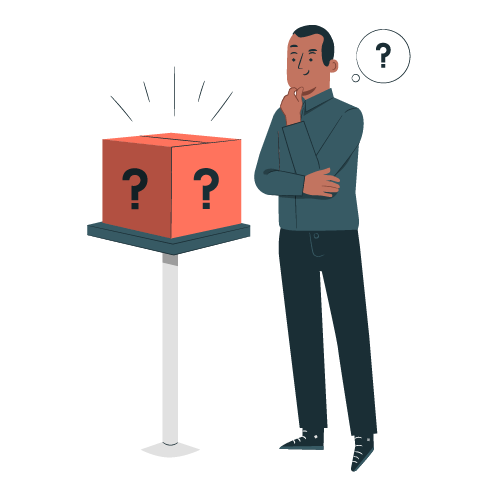
Plutchik’s Sequential Model
This aspect of Plutchik’s psychoevolutionary theory of emotion suggests that emotion is the result of a sequence of events.
- The sequential model proposes that stimulus events, either external or internal, act as the primary triggers that start the emotional process.
- How an individual interprets a stimulus event determines their proceeding emotion, the interpretation (unconscious or conscious) then leads to a feeling state.
- The feeling state then often triggers an impulse to action, which results in an effect/solution.
Let me demonstrate to you how this works.
Step 1: Consider the Possible Causes For This Feeling or Emotion that You Have
Now that you have been able to identify how you feel, consider the possible causes for this. Try to trace back in your memory, and find the initial trigger.
For example: Let’s say you are at work. Even though you are free from obligations at the moment, you feel bored but also extremely restless and anxious. Even though you don’t want to think about it, you know where these feelings are coming from. You had a bit of an argument with your partner in the morning and she sends you a text saying she wants to talk about it when you’re back home.
If you are in the habit of suppressing your feelings, tracking them out of the sequence helps to identify and face them.
Step 2: Make Connections
Allowing yourself to think about the situation further opens the door to more emotions. Emotions like:
- Worry: over a potentially difficult conversation
- Irritation: that they brought it up so early and left you to worry about it
- Sadness: around potential worst-case scenarios
All these feelings come from a sense of love and care for someone else or for yourself, try to make these connections between opposite emotions.
Step 3: Take Action
You might notice the emotions you experience showing up in your speech and body language, as well as your behavior.
Emotions generally prompt some type of action. Some of these actions, like blocking your emotions or lashing out, may not be particularly helpful.
Using an Emotion Wheel or another tool to identify and understand emotions often makes it easier to process them in productive ways. Just keep in mind this doesn’t necessarily mean making them go away.
Let’s say you accept you won’t get an answer from your partner until later. This is actually pretty fitting, since the Emotion Wheel sets acceptance as the opposite of boredom.
You also realize that taking the time to explore your feelings has already started to ease your trepidation and help you feel calmer, making it easier to accept your feelings.
Instead of continuing to mull over what they might say later, you spend the afternoon doing things you enjoy. You also resolve to mention your stress to your partner and ask them to try a less nerve-racking method of communication in the future.
Chapter 6:
The Wheel of Emotions at the Workplace
Plutchik’s Wheel of Emotions can be used in so many ways at work!
It helps you slow down and evaluate your responses, you can learn to identify and harness your emotions, be proud of them instead of suppressing them.
You have the tools now, to empathize with others, to understand where your colleagues and your boss are coming from and help. And grow together.

How does the Wheel of Emotions help you at your workplace?
Wheel of Emotions can help you at your workplace in various ways ranging from helping you to slow down and evaluate your response to allowing you to gain a better insight into office politics.
Let me break it down for you.
It Helps You to Slow Down and Evaluate Your Response
Plutchik’s Wheel of Emotions isn’t solely useful in the workplace;using it in your life can help you make difficult situations at the office easier to deal with.
By visualizing the Wheel, you’re likely already slowing down and taking more time to evaluate your response to a testy coworker or a passive-aggressive teammate.
You Can Learn How to Harness Your Emotions Rather Than Suppressing Them
The narrative we often grow up with is to suppress emotions in the workplace.
The office is meant to be for professionalism alone, but Plutchik’s Wheel can help you to tap into your emotions in the workplace without feeling overwhelmed or causing a scene.
For example, a coworker has made an error on the copy, you know they are stressed out about domestic affairs. Instead of overlooking the error to make it easier for your coworker or stressing them out further by pointing it out, you should assess the situation for what it is.
Point out the error gently, and work together in rectifying it.
It Gives You a Visual Manifestation of What Others Could Be Feeling too
When we’re in arguments with those around us, it’s often difficult to understand their perspective. But, using the Feelings Wheel, you already have a visualization of emotions in your mind.
You can use this to better understand where your opponent may be coming from, too, which will often lead to a faster resolution.
For example, like in the previous case, your colleague might be stressed at the workplace due to unrelated domestic affairs.
Identifying this and empathizing with it helps matters, and most importantly makes your colleague feel safe, and makes the workplace a welcome distraction rather than an added obstacle.
It Allows You to Better Understand Office Politics
Every office has politics, there’s no denying it.
But when you are in better control of your own emotions, you can better understand and tap into what others are feeling with their verbal and non-verbal cues versus solely focusing on your own feelings.
For example, a person going through major life events, like a pregnancy or a divorce, is prone to be affected and vent at the workplace, where relationships are professional.
However, having an understanding of this will help one dealing with such situations better rather than getting confrontational and disciplinary.
You Can Better Understand How to Cultivate a Particular Work Environment That Incites the Emotions You Hope to Elicit in Your Coworkers
If you want your coworkers to think favorably of you, feel festive for a holiday party, or just tap into a feeling of camaraderie, the emotion wheel can help.For example, if you understand what music your co-workers are into, you can imitate a reward mechanism by introducing that music in your workspace, making your workplace something to look forward to for your co-worker.
Continue reading about the ways the Emotions Wheel can effectively assist you in handling stressful situations at work in this informative article on “5 Ways the Emotion Wheel Can Help You Navigate Stressful Work Situations.”
Chapter 7:
The Benefits: How Teachers and Coaches Can Use the Emotions Wheel to Thrive
The Feelings Wheel has helped me in more ways than one.
It enables me to know the right mixing of emotions to draw out certain desired emotions in a client.
The Feelings Wheel is beneficial in various ways from capturing my client’s attention to making my words stick.
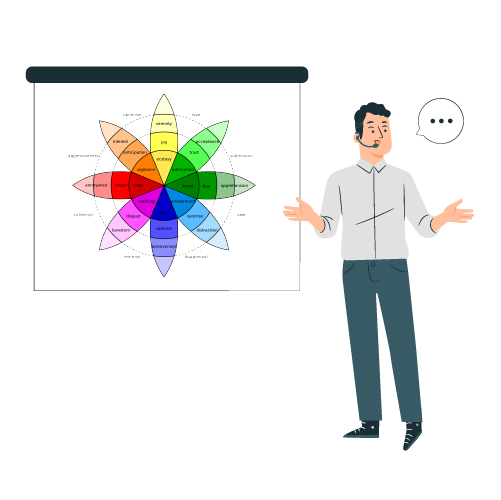
I use it in so many ways. Let me show you how.
How I Use the Feelings Wheel As a Life Coach
As a life coach, you can make use of the Wheel of Emotions in your coaching practice. I have listed out the diverse ways in which you can utilize the Wheel of Emotions to assist your clients.
Know the Right Recipe for Blending Emotions
In order to bring out certain emotions in your clients, it’s important to know how to properly mix them together.
Emotions can be hard to classify, and even harder to stir in our audience.
However, if you are aware of the basic ingredients you need to create each emotion, you can trigger just the right feeling.
Bring a Smile to their Faces
It’s a known fact that joyful and happy coaching and teaching experiences boost knowledge retention and recollection.
Create Interest and Intrigue by Telling a Story
Gain their trust and make them feel connected to the coaching experience by telling them an emotionally engaging story.
For example, drawing real-life references always helps in motivation, people feel their task is achievable and, most importantly, they have a tangible example which makes things stick.
Give them a Pleasant Surprise
If you blend fear with surprise you get awe, and awe leads to amazing experiences. Use an attention-grabbing graphic or pose an unexpected question that gets their mental gears turning.
For example, present your workers with a difficult problem or a personal tragedy. Share how you approached it and overcame it, while maintaining that it could happen to any one of them.
While still stressed, they can possibly see you as someone who might understand them and help them if they face similar problems.
Use Images to Trigger an Emotional Response
We are visual creatures. While the written word may stir the soul and pull the heartstrings, visuals make us feel even more emotionally connected to the learning experience.
For example, try watching Chaplin’s speech from Great Dictator and not wanting to make the world a better place immediately after.
Benefits of using the Emotion Wheel are many, even if you are not a life coach.
You can use the Emotions Wheel in any sphere of life, no matter what field you are in.
Let me show you how.
Benefits of Using the Emotion Wheel
As you may have already learnt, the Emotions Wheel, when used correctly has the power to transform you as a person.
You and I both have complex emotions that we struggle to make sense of. By using the Feeling’s Wheel correctly, we can reap many benefits.
Here are the benefits of using the Feeling’s Wheel :
- Simplifies emotions. Knowing yourself helps avoid downward spirals and overthinking.
- Fosters empathy and connects you deeper to yourself and others
- Recognizes that all emotions provide important context.
- Gives you emotional maturity to manage conflict.
To read more about the various benefits of using Plutchik’s Wheel of Emotions check out this informative article on “How To Use The Emotion Wheel To Better Understand Your Feelings.”
Useful Resources
Now that you know where your emotions come from, what they are and how to use them effectively, let’s go one step further.
In this chapter, I’m going to be listing out resources across formats which will help you explore The Feelings Wheel more thoroughly.
Let’s begin with something fun!
If you think we missed out on some emotions/ feelings, Create your own Emotions Wheel here.
Apps
Bouncy the People Trainer provides you with a thorough, thoughtful multimedia social-emotional learning experience.
Smiling Mind is an app to look after your precious mental needs.
Mood Meter, an app to keep a check on your mood swings and helps you change a negative emotion into a positive one.
Lastly, Mitra or friend, is an app that helps you find a better alignment between your core values and your daily life.
Conclusion
Congratulations on finishing the definitive guide on Plutchik’s Wheel of Emotions!
Now you have all the tools you require to better manage your emotions, your relationships, and your business.
But don’t just stop here; start implementing all that you have learned right away. The time to start making the necessary changes in your life is now!
Remember: consistency is key to the journey of becoming an emotionally intelligent person. Nothing happens in a day.
What did you find most useful about this Definitive Guide?
What steps are you going to take now towards your emotional journey?
Have you found what you were looking for? Is there something that I have missed?
If there’s something you need more clarity on, feel free to ask me in the comments section below and I’ll be sure to answer them!
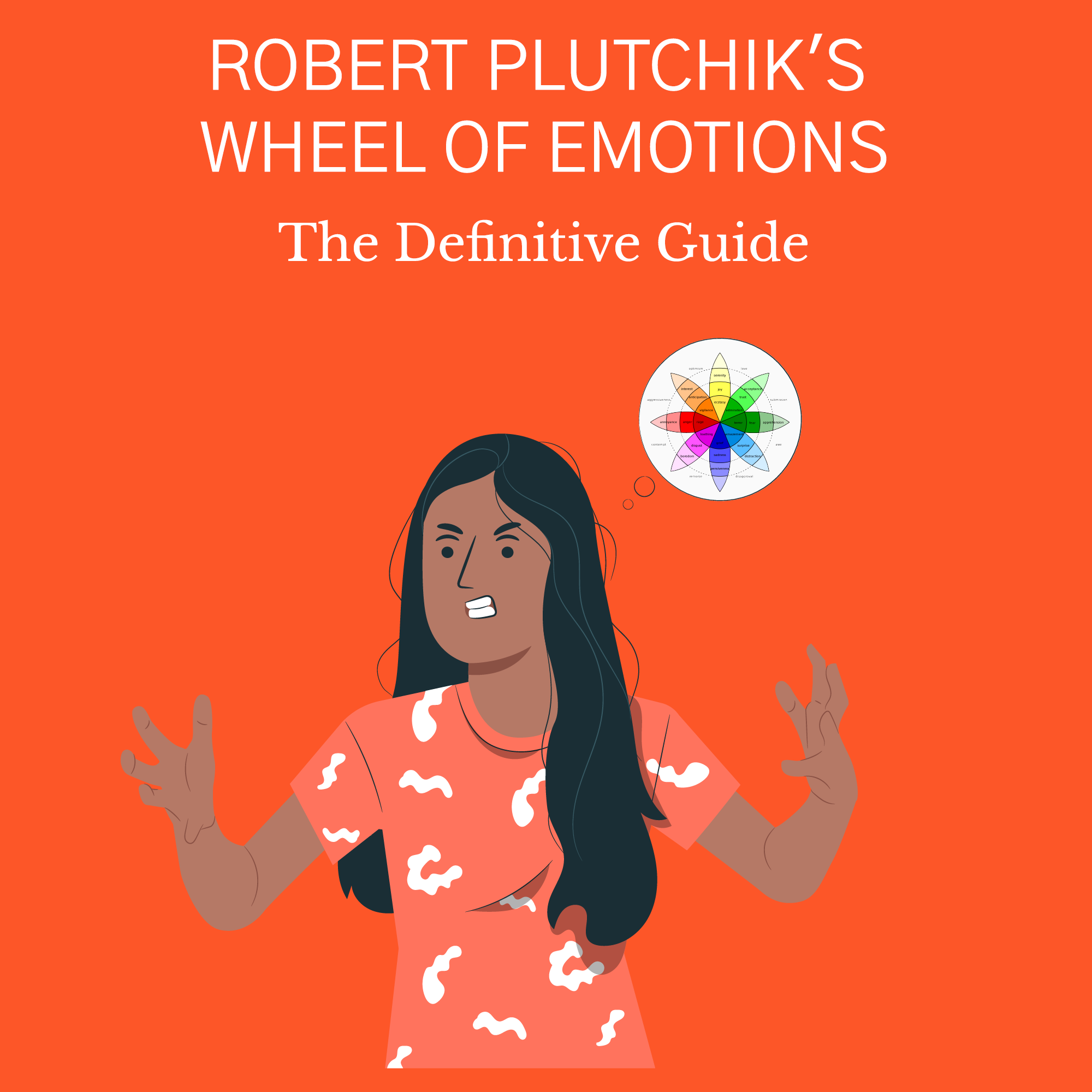
Download a FREE PDF version of this guide…
PDF version contains all of the content and resources found in the above guide.
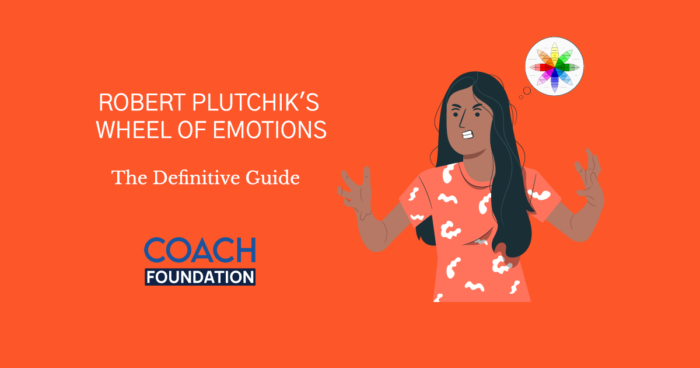




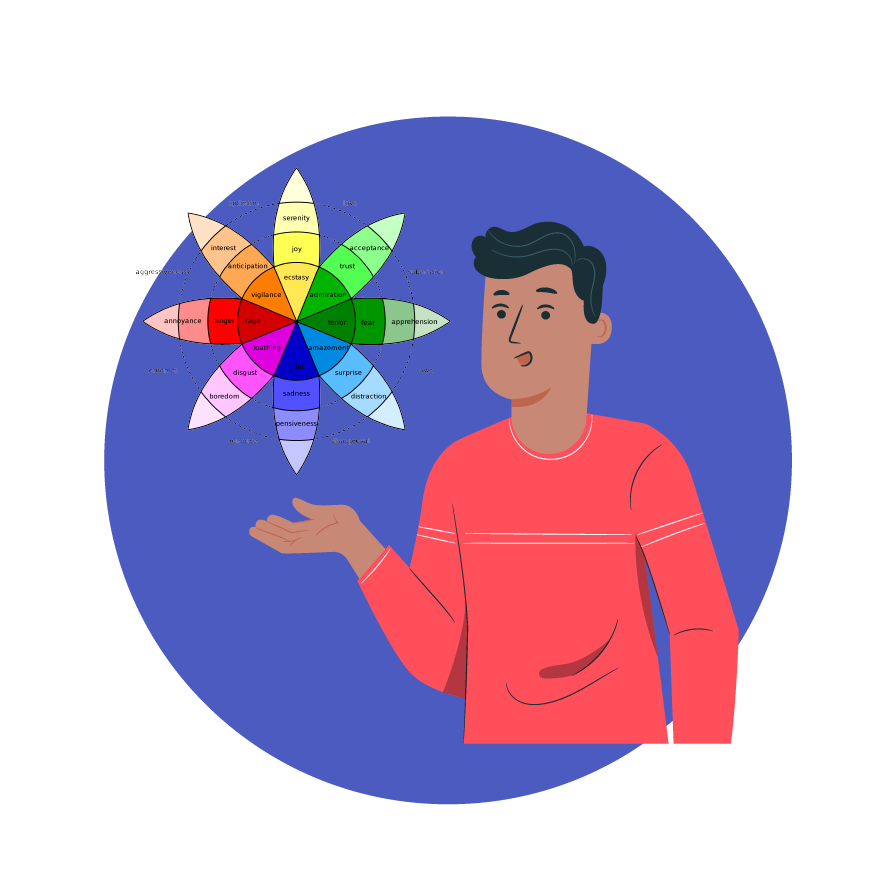


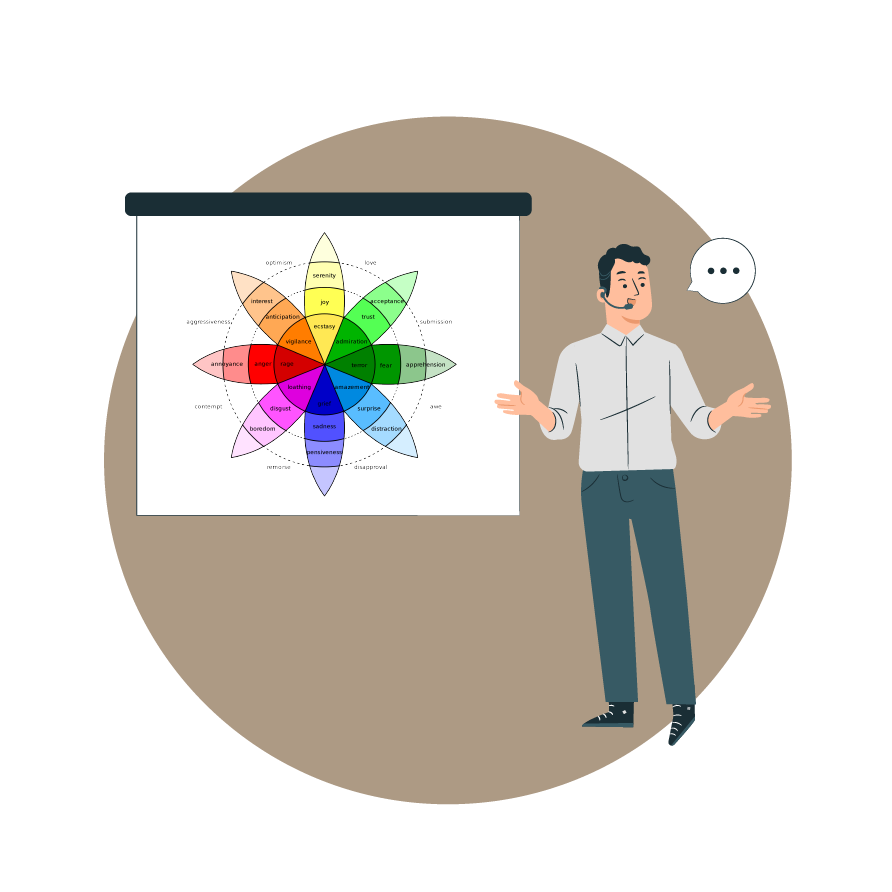















It’s a fantastic write up, Very nice and grateful. I definitely like this website. Keep it
up!
Thanks for the great post!